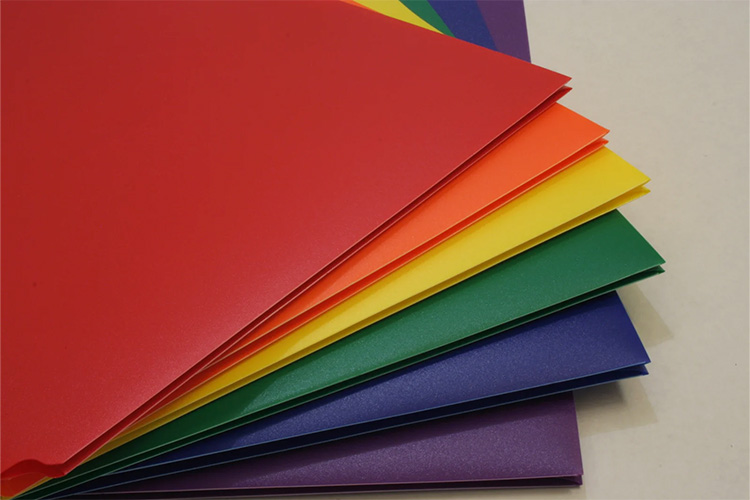
Colors often offer plenty of insight into how one feels about their class subjects. photo by Jacob Olesen
School subjects often have a particular and subconscious color code that can affect people’s association with them.
When school begins every August, students and their families across the country flock to retail stores to purchase folders and notebooks for their new set of classes. Rows of school supplies line the walls of Walmarts and Targets, chock full of any required material in an array of different colors.
Generally, students will choose their notebooks in many separate colors in order to differentiate what notebook corresponds to which subject. But how do they assign the roles of each material? Will math notes go in the red notebook, or the blue one? What about English, Social Studies, and Science? Believe it or not, behind every argument about whether algebra is a red or a blue subject, there’s a deeper layer of psychological reasoning that causes students to associate different classes with specific colors.
Color is a fundamental part of life – besides just holding significant meaning in society, it’s also developmentally necessary for children. As people learn and grow, they’ll begin to associate color with specific feelings and ideas. Western societies have assigned meaning to nearly any color one can imagine. Warm colors are interpreted as angry or passionate, cheerful and inviting, while cool shades are often thought of as calm, sad, or relaxing. Yellow is happy and blue is sad; you wear black to funerals and you never wear white to weddings. Color has always had meaning, and that has seeped into the subconscious way that people think of classic school subjects, like Math, English, Social Studies, and Science.
Science is commonly thought of as green by a majority of students, according to an informal survey taken by journalist Sidney Loftman, at their own high school, Menlo-Atherton in California. This can be most likely attributed to the idea that several branches of science deal with organic matter and outdoor studies, and green is associated with nature and the earth. Overall, many believe that math is a red-coded subject, though some argue that it’s blue, and that English is the red subject.
Interestingly, what color one associates school subjects with can offer some insight into how they feel about said subject. If one takes a closer look at what psychological factors lie behind red and blue, they may come to an understanding of what significance specific school subjects hold for them.
Focusing on math as the best example, here’s what the way you think of it may say about you:
If you think of math as red, you’re likely not a big fan of it – while red certainly symbolizes several things (not all of which have negative connotations), it is most commonly associated with aggression and danger. On the other hand, red has also been known to be thought of as a color of confidence and power. It’s possible that if you think of math as red, you could also be super confident in your algebraic abilities. You likely seek out challenges, or you find intense sets of problems stressful and frustrating. Overall though, when math is labeled as red, it makes it stand out as a difficult subject, whether that’s positive or negative for the person who thinks of it as such.
Blue is a color that people often think of as calming and mellow. Those who think of math as a blue subject likely find it relaxing. You may be drawn to puzzle solving and logical reasoning, and the idea of following a dependable line of mathematical rules to solve a problem is perhaps calming to your brain.
In general, the way one thinks of colors often has strong psychological reasoning behind it. Learning what you associate them with can open doors to plenty of other meanings as to how you think and act, especially in connection with academic subjects.